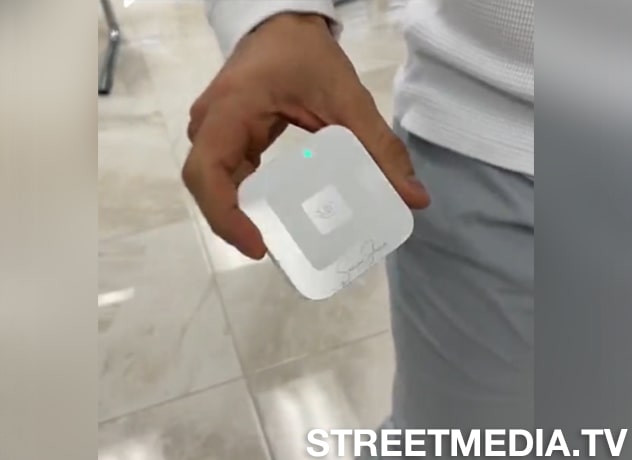Don’t Fall for the Card Reader Scam: Protect Your Credit Card Information

Recently, a video went viral on social media showing how scammers are using new tactics to obtain people’s credit card information. In this new scam, the scammers are accidentally bumping into people in public while carrying a card reader in their pocket. This card reader scam involves the scammer quickly swiping the card through the reader to obtain the card information, without the victim even realizing it.
This is just one example of how scammers are getting dangerously creative these days, and it’s important for everyone to be aware of the potential risks and take steps to protect themselves from these types of scams.
One of the reasons why this new card reader scam is so effective is that it catches people off guard. Most people are not expecting to be bumped into and paying for random things, so they are more likely to comply with the scammer’s demands without thinking too much about it.
Furthermore, the use of a card reader in this scam adds an extra level of legitimacy to the transaction. People are accustomed to using card readers to make payments these days, so seeing one being used in this context doesn’t raise any immediate red flags.
In addition to the bump-and-swipe card reader scam, there are many other types of scams out there that people need to be aware of. Some common examples include phishing scams, where scammers send emails or messages posing as legitimate companies and asking for sensitive information such as passwords or credit card numbers.
>> New Card Reader Scam: Scammers Getting Dangerously Creative
There are also phone scams, where scammers call people and pretend to be someone else, such as a government official or a bank representative. They then ask for personal information or payment, claiming that it’s necessary for some urgent reason, such as to avoid legal trouble or to prevent a financial disaster.
To protect yourself from these types of scams, it’s important to be vigilant and aware of the potential risks. Here are some tips to help you stay safe:
Be skeptical of unsolicited requests for personal information. Legitimate companies and organizations will never ask you to provide sensitive information such as passwords or credit card numbers over email or text message. If you receive a message like this, do not respond and delete it immediately.
Be cautious when giving out personal information over the phone. If someone calls you and asks for personal information, always verify their identity and the reason for the call before providing any information. If you’re not sure, hang up and call the company or organization directly using a phone number you know to be legitimate.
Use strong passwords and change them frequently. This can help prevent hackers from gaining access to your accounts and stealing your personal information.
Keep your computer and other devices up to date with the latest security updates and antivirus software. This can help prevent malware and other malicious software from infecting your device and stealing your personal information.
Monitor your accounts and credit reports regularly. If you notice any suspicious activity, report it immediately and take steps to protect your accounts and your identity.
Scams are not a new phenomenon, but they have been growing rapidly in recent years, especially in America. Scammers are becoming more creative and sophisticated, making it increasingly difficult for people to spot and avoid their tactics.
One reason why scams are growing so quickly in America is that the country has a large and diverse population, which makes it easier for scammers to target a wide range of people with different backgrounds, interests, and needs.
Furthermore, many people in America are highly reliant on technology and online services, which can make them vulnerable to scams that take advantage of their digital habits. For example, scammers may send phishing emails or messages that appear to come from a legitimate company, tricking people into giving out their personal information or clicking on a malicious link.
Another factor contributing to the growth of scams in America is the increasing use of cryptocurrency and other digital payment systems. These technologies can be highly convenient, but they also make it easier for scammers to move money quickly and anonymously, making it more difficult for law enforcement to track and recover stolen funds.
Despite the growing threat of scams in America and around the world, there are steps that people can take to protect themselves. For example, they can stay informed about the latest scams and tactics by reading news articles and following trusted sources on social media.
They can also take steps to protect their personal information, such as using strong passwords, keeping their software up to date, and being cautious when giving out personal information online or over the phone.
In addition, people can report any suspected scams to the appropriate authorities, such as the Federal Trade Commission or local law enforcement agencies. This can help prevent others from falling victim to the same scam and may even help catch the perpetrators.
In conclusion, the bump-and-swipe card reader scam shown in the viral video is just one example of how scammers are using new tactics to obtain people’s credit card information. It’s important for everyone to be aware of the potential risks and take steps to protect themselves from these types of scams. By staying vigilant and following the tips outlined above, you can help protect yourself and your personal information from scammers and hackers.



